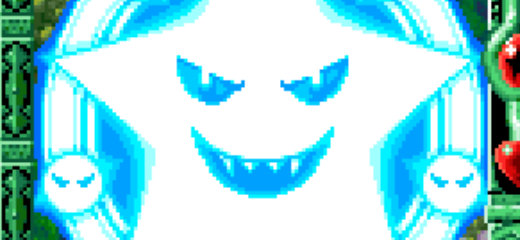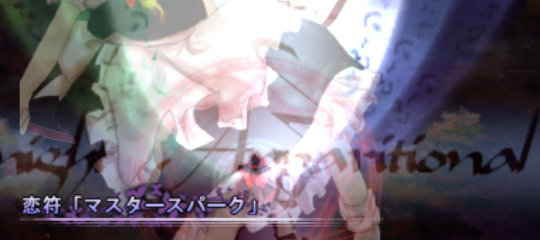There is something in shmups that I call “bomb sense”.
Every shmup I love has a common mechanic - smart bombs, a very limited-use item that clears the screen of bullets, deal moderate damage to everything and grant a period of invuln. Often they may have other properties, but this is the important part. Bomb economy is often punishingly strict - taking a hit with bombs in stock will reset the amount - in effective terms, you have just wasted X amount of them for the entire run. No pockets in a shroud.
In every situation, every pattern, every pinch and pin, the player evaluates how they feel at that moment against their game experience - to determine how likely they are to need a bomb, and to hover their finger over the bomb button exactly that much. If their bomb sense is good enough, the moment they feel that lapse, that twinge, that TERROR INSTINCT - a gap in sensation, a mistracked bullet, a mistimed dodge - the bomb may save them within a frame or two.
To use either too many or too few bombs is what really kills you in these games - creating a constant mindgame against the self.
 Bombs in Twinkle Star Sprites can slow the game to a crawl, which may help your opponent just as much as yourself.
Bombs in Twinkle Star Sprites can slow the game to a crawl, which may help your opponent just as much as yourself.
Bombs make space for strategy. Players may mentally commit to using a bomb ahead of time in problematic parts of the game - and over time, practice more at such parts to obviate the need for the bomb, freeing it up for later. In the face of a dazzlingly mechanically hard game is where resources and planning truly matter – we would not have to think about bombs at all if it was casually possible to blind clear every situation.
With bombs, the one-hit kills of shmups suddenly become much more accomodating than meets the eye. Three lives to start with, three bombs per life – add three or four bonus lives, a handful of bonus bombs, and we now have something like 30 “mistakes”1 where a bomb or life was consumed over the course of a run - this is astonishly forgiving, and can even compare favourably to games with fluid health systems. But, these are only available if we know and acknowledge our limits.
I love bombs. Bombs are my favourite mechanic of all time. Using them just in time is thrilling in itself, the standard three seconds of invuln providing a tiny moment to catch breath before counterfire. Bombs let me scam my way past things that I am specifically bad at - curvy lasers, left-right sandwich patterns, etc. Having three bombs and a prayer is a lot more exciting and dramatic than having three HP and a prayer. Bombs (and small hitboxes, wink) are the designer putting a finger on the scale and whispering “all things are possible” in the player’s ear, as well they should.
(This is why I tend to dislike health bars in shmups - they reduce emphasis on bombs. I do have a synthesis in mind that I think will be cute, but that’s for another time, I suppose!)
Bombs are by and large a unique mechanic to shmups. The panic button is not, of course, but panic buttons rarely work with such immediacy and certainty as a smart bomb, and the player is rarely trusted with as many.
 Half the thrill is the giant laser, the other half is knowing oneself enough to have pressed the button in time.
Half the thrill is the giant laser, the other half is knowing oneself enough to have pressed the button in time.
I refer to “bomb sense” like it’s a stat on some astral character sheet, but in reality it’s a cross product of the hundreds of ways that dictate how a player interfaces with a game.
The player needs to be able to press the button - a specific button - in time, reliably.
The player must be able to read the screen - in itself, a product of their eyesight, the art style, the monitor, the lighting in the room.
The player must be able to track and anticipate the wrathful fireworks of a shitload of moving objects on screen.
The player needs the genre literacy to know this is how bombs work, how many are at disposal, and to know that hesitation means losing it all. Genre literacy is something that is doled out by a community – most mainstream games communities are (understandably) ignorant or sparse about shmups, and that’s just in the English-speaking world. More niche communities may at times directly gatekeep information away from certain people, or indirectly leave the task to a toxic membership2.
The player needs the raw experience to be able to recognise a lapse in their judgment, to know when something’s off, to know when they need to hit that button. Said experience is best acquired, over time that none of us have in equal amount, by playing lots of different shmups. I’m not old, and I never will be3, but I remember when this was a rich man’s genre – when emulation was imperfect, when ports were £300 PS2 imports hoarded by collectors, when owning arcade equipment was the only way to enjoy much of the canon.
The player needs the confidence required to embrace a type of damage control. (If only this was a neurological problem.)
I love bomb sense, it is my favourite part of my beloved shooting games. I want to create a game that brings the feeling of using bombs to the world. Attempting to bottle a feeling is the only bulletproof reason to make a video game. But at the same time, my experience tells me that bomb sense is the #1 roadblock4 for people getting into this genre - a problem of accessibility.
 HALF LIGHT [Challenging: Success]
HALF LIGHT [Challenging: Success]
There is a popular way of thinking about difficulty and accessibility in video games. It is concerned almost solely with difficulty modes, rebindable controls, colourblind options, assist options, cheats, console commands. Things on menus5, endless menus, mostly. Allow the player to craft their own experience, indeed to demand it. I don’t think any of these things are useless - the most basic example, rebindable controls, lets a variety of disabled people even get to this problem - but this path certainly gives no useful design solutions to this specific problem.
I could throw more bombs at the player, I could grant a longer counter-bomb window, I could give autobomb, I could utterly torment myself by turning bombs into a cooldown mechanic, I could make patterns simpler to obviate the need for bombing. These may accomplish other goals, many of them noble enough, but none of these will teach or compel a rookie player any further to hit the button and feel what I’m trying to bottle. Indeed, many of these may even work against bomb sense.
What is required is to make the learning process itself accessible. Tutorials, condescending messages on the game over screen, missions that drill the player – a step in a good direction, certainly, but they haven’t worked incredibly well so far. They even feel outdated, I may dare to say. Imagination is needed, in no small amount.
Shmups may as well be played by aliens to most folk, but I call on this foreign and specific concept to bring the idea of “player skill” into question. What it means, what it means to evaluate it6, and most crucially what it means to foster it within the player.
What exactly is it that we want to make accessible?
-
Japanese players may call it a “miss” to take a hit - ミス, a shortened loan of “mistake”. ↩
-
The current English-speaking shmup community doesn’t seem geared towards gatekeeping people out of the genre, but I sadly wouldn’t know accurately either way, and I also wouldn’t know if this has always been the case. ↩
-
I intend to play/consider video games and look at drawings of girls with big hooters until death’s ensconce comes for me. May the light never go out. ↩
-
Funnily enough, the acts of bullet dodging and target suppression come very naturally to many people. Even fairly advanced maneuvers like streaming and cut-backs are within intuition’s grasp, it seems – but I can guarantee you, every rookie will repeatedly suffer the tragedy of dying with bombs in stock. ↩
-
Evaluating a player’s skill in itself sounds like something that would only be fun to a robot, but if you ever want to bottle a feeling of mastery, it’s the only way. ↩